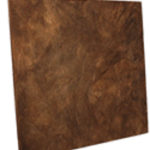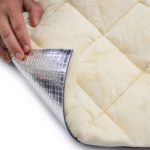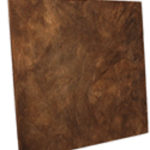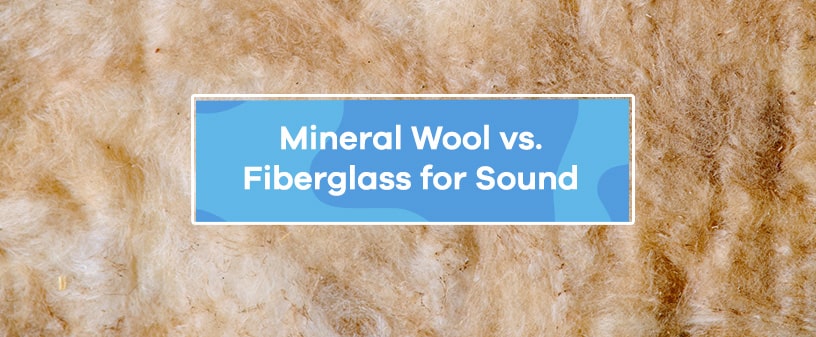
Soundproofing can create an oasis of calm at home or cultivate office productivity. Eliminating pesky noises can be the difference between inner peace and outer anxiety. There are many options for soundproofing your space, but using a dense material is the key to absorbing sound and stopping echoes in their tracks.
Mineral wool and fiberglass are heavyweights of soundproofing. Both have sound-absorptive properties, and less air makes these materials denser than their foam counterparts. So, which is better for your unique needs, mineral wool or fiberglass? Let’s compare these two sound-stopping superheroes to see which emerges victorious!
What Is Mineral Wool?
Mineral wool is not something you get from a sheep — it is a natural fiber insulation material. You may also hear it called rockwool, stone wool or glass wool. It may come from glass, stone or “slag.” Slag is the by-product of steel production. When exposed to high heat, the fibers melt and get spun into wool-like filaments. You can find mineral wool insulating your home in attics, crawl spaces and ceilings. The denseness of this material makes it ideal for soundproofing.
Benefits of Mineral Wool for Sound
Now that you know the science bit, here are some of the advantages of acoustic mineral wool for soundproofing:
- Sound-canceling properties: The thick composition absorbs sound waves and blocks echoes.
- Eco-friendly components: Mineral wool consists of natural, renewable materials.
- Flame-resistant: Mineral wool does not conduct heat and is often used in flame-retardant products.
- Anti-moisture: Mold and bacteria love moist environments. Luckily, mineral wool rejects moisture and the nasties that thrive in it.
What Is Fiberglass?
As the name suggests, fiberglass’s main ingredient is, you guessed it, glass. Melted glass gets spun into fibers and finished with a polymer adhesive. You may know fiberglass as a cotton candy-like substance — though you should absolutely never eat it! Similar to mineral wool, fiberglass insulates homes and businesses. It comes in batts (blankets), rolls, rigid boards, or loose-fill.
Benefits of Fiberglass for Sound
With fiberglass insulation for soundproofing, you enjoy the following benefits:
- Noise-dampening: Placed in walls, ceilings and ducts, fiberglass reduces reverberation.
- Recycled sources: This material can comprise between 40% and 60% recycled elements.
- Flame retardancy: Fiberglass has natural anti-flame properties. It is often treated with extra fire retardant solutions.
- Energy efficiency: This material reduces heating and cooling bills while reducing noise.
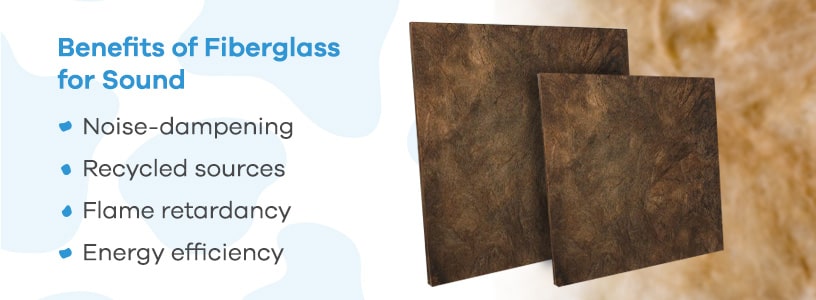
Mineral Wool vs. Fiberglass
At the surface level, mineral wool and fiberglass seem similar. Although alike in many ways, there are differences between these two materials.
Construction
Mineral wool and fiberglass have different construction methods, giving each unique properties. Mineral wool is loose, whereas fiberglass is rigid. This means wool has to have a built-in frame covered with fabric to keep the material inside, whereas fiberglass holds its shape without requiring a frame.
Instead of a frame, fire-resistant acoustic cloth covers the fiberglass panels. Mineral wool panels’ frames offer more protection and support. However, the lack of a frame makes fiberglass panels lighter and easier to hang.
Insulation
Insulation is the mooogical property that allows materials to absorb sound waves. R-values measure insulation. R-value refers to how a material resists conducting heat. The higher the value, the better the thermal performance.
Comparing fiberglass vs. mineral wool insulation resembles comparing Black Angus to Texas longhorn cattle. Both are fantastic in their own right! Mineral wool has an R-value of 3.10 to 4.0, excellent at blocking heat transfer. Depending on whether it is loose or formed into batts, fiberglass insulation has an R-value ranging from 2.2 to 3.8.
Noise Reduction Coefficient (NRC)
When it comes to sound cancellation, these two substances are neck-and-neck! We use a noise reduction coefficient (NRC) to calculate the average sound absorption of a material. The higher the rating, the better the acoustic performance.
The NRC of higher-quality soundproofing mineral wool is between 0.95 and 1.05, while multipurpose wool ranges from 0.8 to 0.9. Fiberglass has an NRC rating of between 0.90 and 0.95. The difference between the two materials is marginal. Both have high NRC ratings, making them ideal for residential or commercial noise reduction.
Sound Transmission Class (STC) Rating
Another important soundproofing consideration is a material’s sound transmission class (STC). This measures how much sound a substance can block. The STC factors in decibels, transmission loss and sound frequency. Most wall STC ratings fall between 20 and 65, with 65 being minimal noise transmission.
Mineral wool generally has a higher STC rating than fiberglass. However, fiberglass still offers impressive sound-blocking properties.
Cost
How much mooola you spend on a soundproofing project can influence material choice. In the battle of budgets, fiberglass can be more affordable than glass wool. The more complex manufacturing process of wool adds to the cost. However, rockwool’s durability and increased thermal regulation may lower utility bills to offset costs. It all comes down to preference and project requirements.
Mineral Wool vs. Fiberglass: Which to Choose?
Now, the moment you have been waiting for! Which is the better soundproofing material — mineral wool or fiberglass? The answer may not be so simple. Both are spectacular products that do a great job of absorbing sound. Comparing the pros and cons of each, it can be challenging to draw a clear winner.
In the red corner, we have mineral wool. Here is a summary of the pros that make this material a strong soundproofing contender:
- It has the highest STC rating for insulation materials.
- The R-value is ideal for sound absorption.
- Thermal regulation properties may decrease utility bills.
- Its anti-moisture properties repel mold and bacteria.
And in the blue corner, fiberglass is ready to jump into the ring. Its champion qualities include:
- It is lightweight and easy to find.
- Fiberglass holds its shape without a frame.
- You can custom-cut panels to the appropriate size.
- It has a similar NRC rating to mineral wool.
Choosing between mineral wool vs. fiberglass for sound depends on your needs. Mineral wool may be a better option for high-demand acoustic spaces. It offers increased density and absorbs low-frequency sounds. Fiberglass suits noise control in residential or commercial spaces. Cost-effective and durable, it works well for large-scale projects.
Top Quality Sound Products to Suit Every Need
Picking between two amooozing materials can be tricky, but at Soundproof Cow, we have you covered! You are spoiled for choice with our range of soundproofing products, including our acoustic fiberglass panels! These panels are made of glass mineral wool for optimal soundproofing.
We have more than 25 years of experience providing spectacular sound solutions. If you need advice on insulation materials, give Soundproof Cow a bell at 866-949-9269. Or, explore our website to learn why our high-quality products bring all the customers to our yard!





